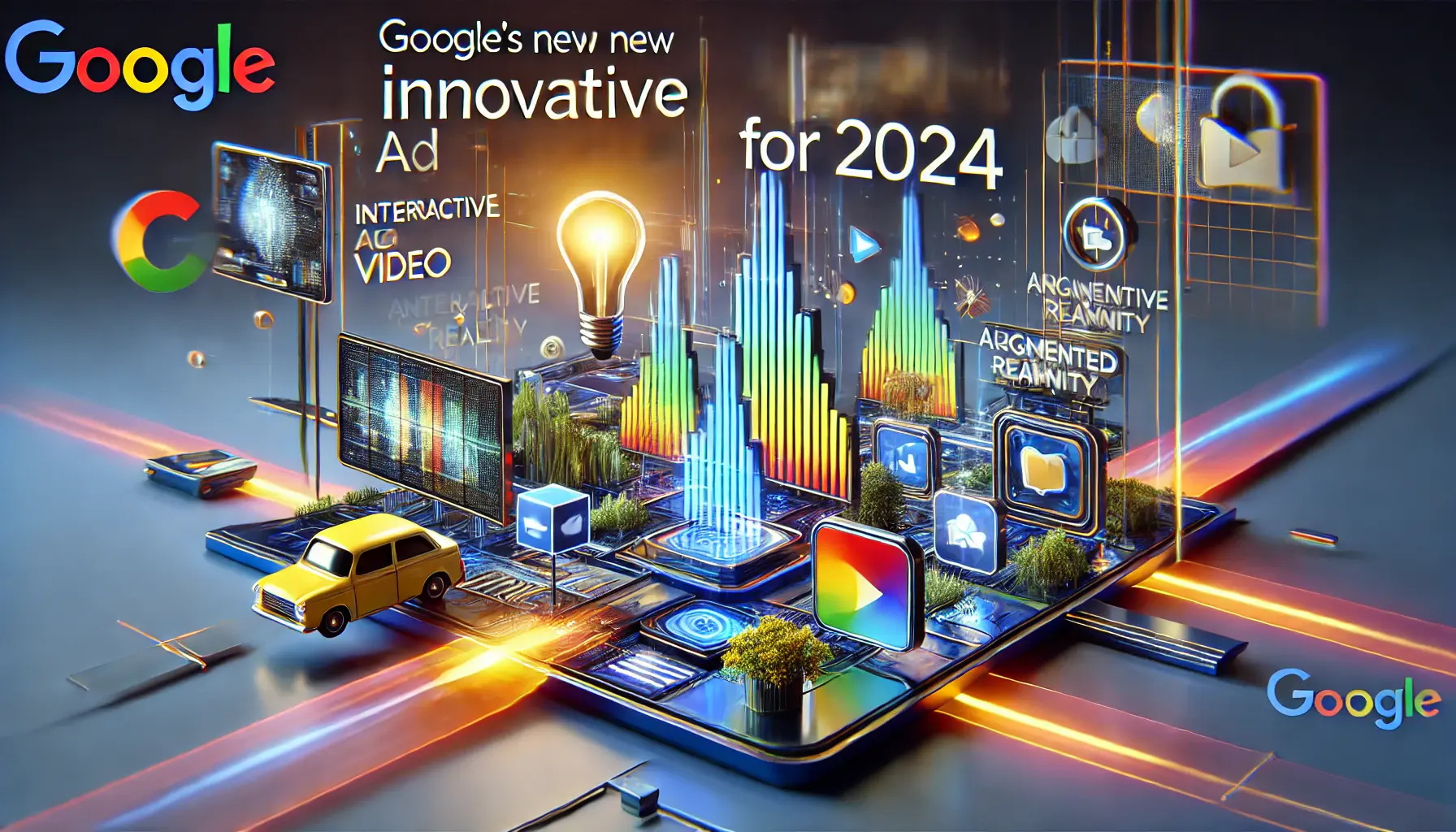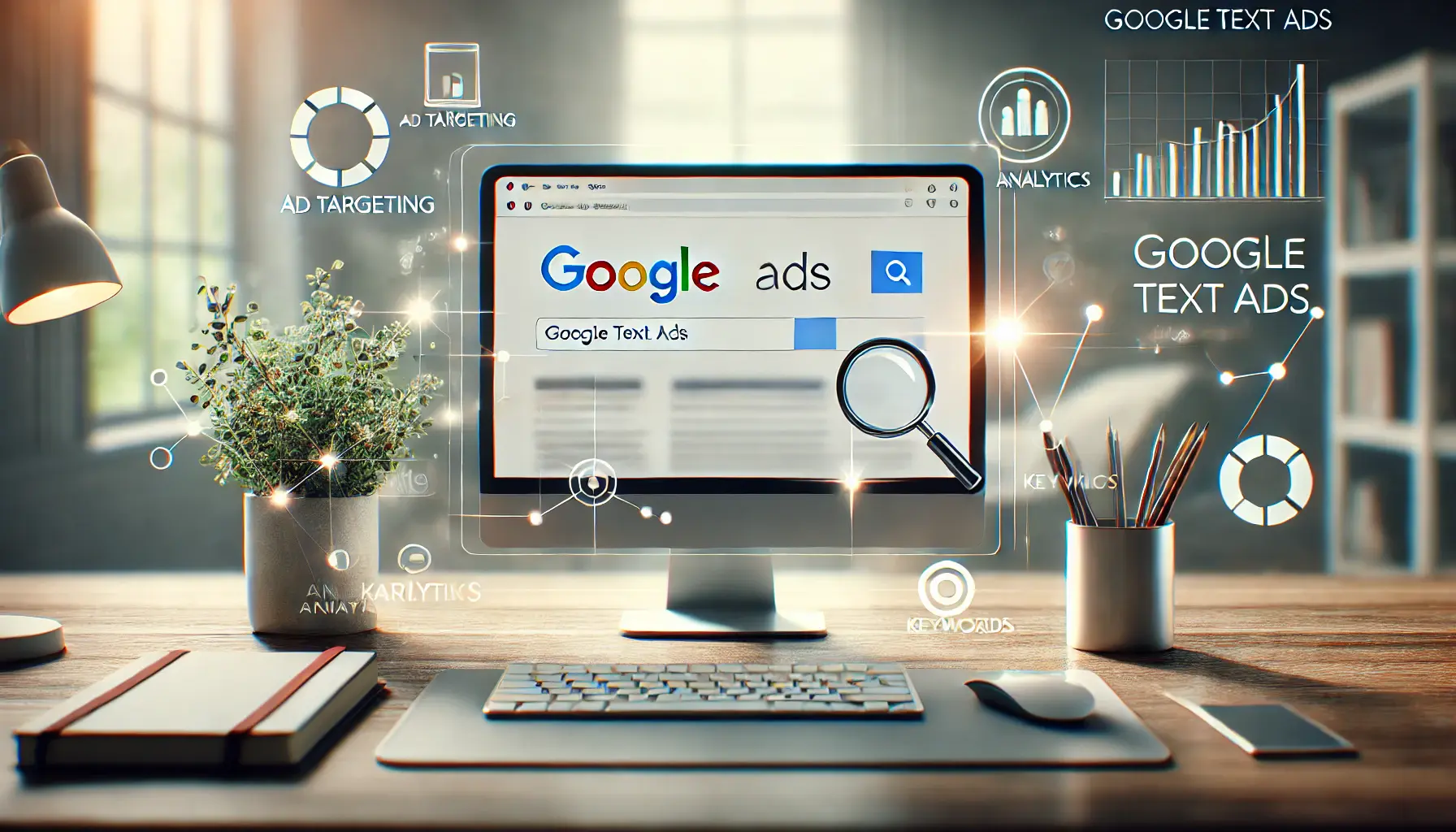Google Display Ads have become a cornerstone for digital marketers trying to maximize their brand’s online visibility.
Among the various strategies available, picking the right ad format can go a long way in determining campaign success.
With innovative ad formats changing the game in how businesses connect with audiences, understanding these options is crucial for marketers.
In this article, we’ll explore the five most impactful ad formats that are reshaping the landscape of Google Display Ads.
Let’s start with the first game-changer: Responsive Display Ads.
- Responsive Display Ads: Adapting to User Preferences
- Uploaded Display Ads: Custom Creative Control
- Video Ads: Engaging Audiences Visually
- Gmail Ads: Reaching Users Directly in Their Inbox
- Discovery Ads: Capturing Attention Across Google Properties
- Conclusion: Embracing Ad Formats for Maximum Impact
- Common Questions Concerning the Formats of Google Display Ads
Responsive Display Ads: Adapting to User Preferences
Responsive Display Ads are one of Google’s most versatile and powerful ad formats, designed to automatically adapt to fit different screen sizes, placements, and user preferences.
This adaptability allows advertisers to deliver tailored messages that resonate with diverse audiences without the need for extensive manual effort.

A futuristic visualization of dynamic asset combination in digital marketing.
Dynamic Asset Combination
With Responsive Display Ads, you can upload multiple headlines, descriptions, images, and logos.
Google’s machine learningA field of artificial intelligence that enables systems to learn and improve from experience without explicit programming. system dynamically combines these assets to create optimized ads for each placement.
This ensures that your ad is always presented in the most effective way, increasing the likelihood of engagement.

An advanced representation of automated ad resizing in digital advertising.
Automated Ad Resizing
One of the standout features of Responsive Display Ads is their ability to resize automatically to fit a variety of ad spaces.
Whether it’s a small banner or a large rectangular placement, these ads adjust seamlessly, saving you time and ensuring a professional appearance.

A visualization of advanced performance optimization in digital marketing.
Enhanced Performance Optimization
Google leverages its vast data resources and AI capabilities to analyze user behavior and continuously improve the performance of Responsive Display Ads.
By finding out what asset mix works most effectively, it helps in securing better click-through rates and conversions with as little manual intervention as possible.
- Upload up to 15 images, 5 headlines, and 5 descriptions for dynamic testing.
- Let Google’s algorithms optimize the best combination of your assets.
- Monitor performance through Google Ads Manager to refine strategies.
Responsive Display Ads strike a great balance between flexibility and performance, making this a must-have tool in your Google Display Ads arsenal.
Next, we’ll explore another key player: Uploaded Display Ads.
Responsive Display Ads combine machine learning and automated optimization to deliver tailored messages, ensuring higher engagement and efficiency.
- Adapts seamlessly to different screens and placements.
- Uses AI to optimize performance dynamically.
- Ideal for diverse audience outreach with minimal manual effort.

A visual representation of custom creative control in uploaded display ads.
Uploaded Display Ads: Custom Creative Control
In the realm of Google Display Ads, having the ability to craft and upload your own creatives offers unparalleled control over your brand’s messaging and aesthetics.
Uploaded Display Ads empower advertisers to design tailored visuals that align perfectly with their brand identity, ensuring consistency and uniqueness across all digital touchpoints.

An illustration of design flexibility and brand consistency in digital marketing.
Design Flexibility and Brand Consistency
By creating your ads outside of Google’s platform, you can utilize advanced design tools to produce visuals that reflect your brand’s unique style.
This approach allows for:
- Complete Creative Freedom: Design ads that incorporate specific fonts, colors, and imagery that resonate with your target audience.
- Brand Uniformity: Maintain a consistent look and feel across all marketing channels, reinforcing brand recognition.

An illustration of supported file formats and specifications in digital advertising.
Supported File Formats and Specifications
When uploading your custom ads to Google Ads, it’s essential to adhere to the platform’s specifications to ensure optimal performance.
Google accepts the following file types:
- Image Files: Google accepts GIF, JPG, and PNG formats as static image ad formats.
- HTML5 Files: For dynamic, interactive, and animated ads, Google prefers using HTML5 for its advanced content features.
It is also important to follow Google’s size and dimension specifications.
For example, standard ad sizes include 300×250, 728×90, and 160×600 pixels.
Ensuring your ads meet these specifications will enhance their display quality and reach.

An illustration of best practices in effective implementation of digital advertising strategies.
Best Practices for Effective Implementation
To maximize the impact of your Uploaded Display Ads, consider the following best practices:
- Optimize File Sizes: Keep file sizes within Google’s recommended limits to ensure quick loading times and a better user experience.
- Include Clear Calls-to-Action (CTAs): Encourage user engagement by incorporating compelling CTAs that guide users toward desired actions.
- Test Multiple Variations: Experiment with different designs and messaging to identify what resonates best with your audience.
By leveraging Uploaded Display Ads, you gain the ability to deliver highly customized and brand-specific messages to your audience, setting your campaigns apart in the competitive digital advertising landscape.
Next, we’ll delve into the engaging world of Video Ads and their role in captivating audiences.
Uploaded Display Ads offer unparalleled control for advertisers, allowing for complete customization of visuals and messaging.
- Ensures brand consistency with tailored designs.
- Supports advanced formats like HTML5 for dynamic ads.
- Requires adherence to Google’s specifications for optimal performance.

An illustration of video ads visually engaging audiences in digital marketing.
Video Ads: Engaging Audiences Visually
Video advertising has emerged as a powerful tool in the dynamic world of digital marketing, especially within Google Display Ads, where its immersive nature strengthens audience connections.
By combining visuals, sound, and storytelling, video ads can capture attention and convey messages more effectively than static formats.

An illustration of integration between YouTube and partner sites for seamless ad display.
Integration with YouTube and Partner Sites
Google’s extensive network allows video ads to appear not only on YouTube but also across various partner websites and apps.
This broad reach enables advertisers to:
- Target Diverse Audiences: Engage users across multiple platforms, increasing brand visibility.
- Leverage Contextual Placements: Place ads alongside relevant content, enhancing user engagement.

An illustration of skippable and non-skippable video ad formats in digital advertising.
Skippable vs. Non-Skippable Formats
Understanding the different video ad formats is crucial for campaign success:
- Skippable In-Stream Ads: These ads play before, during, or after other videos and allow viewers to skip after 5 seconds. They are ideal for driving website traffic or encouraging specific actions.
- Non-Skippable In-Stream Ads: Lasting up to 15 seconds, these ads must be watched before the main video content. They are effective for delivering concise, impactful messages.

An illustration of measuring engagement and conversion metrics in a high-tech advertising setup.
Measuring Engagement and Conversion Metrics
To assess the effectiveness of video ads, it’s essential to monitor key performance indicators:
- View Rate: The percentage of people who watched your ad. A higher view rate indicates compelling content.
- Click-Through Rate (CTR): Measures how often viewers clicked on your ad. A high CTR reflects effective calls-to-action.
- Conversion Rate: Tracks how many viewers completed an intended activity, such as purchasing something or subscribing to a newsletter.
By studying these metrics, advertisers can optimize video ad campaigns to improve engagement and achieve campaign goals.
Up next will be Gmail Ads and how they serve users directly in their inboxes.
Video Ads leverage storytelling and dynamic content to capture user attention and drive deeper engagement.
- Offers skippable and non-skippable formats to suit campaign goals.
- Measures effectiveness through view rates, CTR, and conversions.
- Integrates seamlessly across YouTube and partner sites.
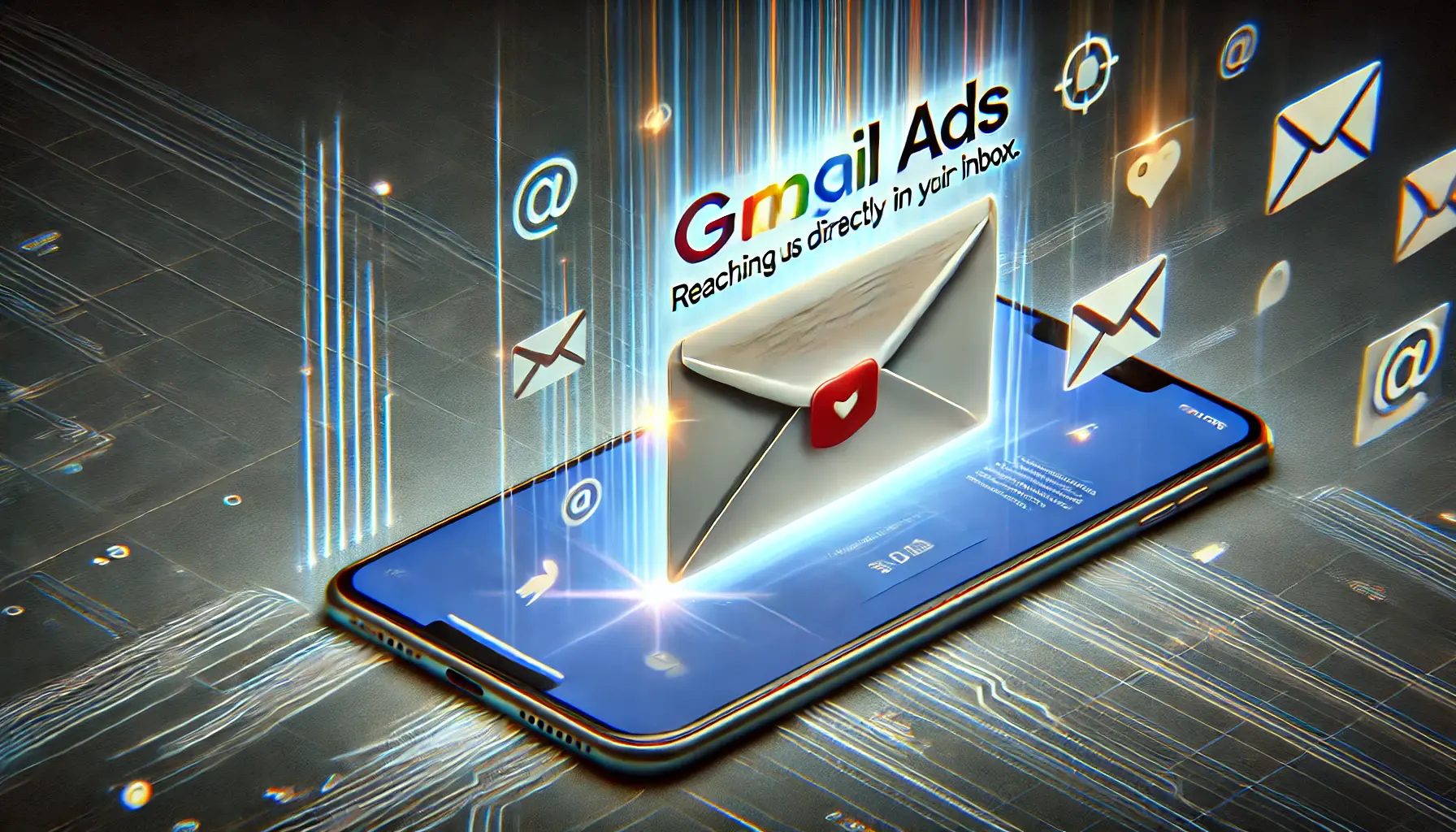
An illustration of Gmail ads reaching users directly in their inbox, blending with email threads.
Gmail Ads: Reaching Users Directly in Their Inbox
In the realm of Google Display Ads, Gmail Ads offer a unique opportunity to engage users directly within their email inboxes.
By integrating seamlessly into the Gmail interface, these ads provide a personalized and interactive experience, allowing advertisers to connect with potential customers in a space they frequently visit.

An illustration of interactive ad formats and features on different devices.
Interactive Ad Formats and Features
Gmail Ads are designed to resemble regular emails, making them less intrusive and more engaging.
Key features include:
- Collapsed Ads: Initially appear as a subject line in the Promotions tab, encouraging users to click and expand.
- Expanded Ads: Upon clicking, the ad opens like an email, displaying rich media, images, videos, and call-to-action buttons.
- Forwarding and Saving: Users can forward the expanded ad to others or save it for later, increasing the ad’s reach and longevity.

An illustration of targeting options for personalized outreach in digital marketing.
Targeting Options for Personalized Outreach
Gmail Ads leverage Google’s robust targeting capabilities to deliver personalized content.
Advertisers can target users based on:
- Keywords: Reach users whose emails contain specific keywords relevant to your product or service.
- Demographics: Target audiences based on age, gender, and location to ensure your message reaches the right people.
- Affinity Audiences: Engage users with interests aligned to your offerings, enhancing the likelihood of engagement.

An illustration of analyzing open rates and user interactions in email marketing.
Analyzing Open Rates and User Interactions
Measuring the effectiveness of Gmail Ads is crucial for optimizing campaigns.
Important metrics to monitor include:
- Open Rate: The percentage of users who clicked to expand the ad, indicating the ad’s appeal.
- Click-Through Rate (CTR): Measures how often users clicked on links within the expanded ad, reflecting engagement levels.
- Conversion Rate: Tracks the number of users who completed a desired action, such as making a purchase or signing up for a newsletter.
By analyzing these metrics, advertisers can refine their Gmail Ads strategies to enhance performance and achieve marketing objectives.
Next, we’ll explore Discovery Ads and how they capture attention across various Google properties.
Gmail Ads provide personalized interactions by integrating ads within a user’s email environment.
- Appears as collapsed ads in the Promotions tab for seamless engagement.
- Expanded ads include rich media and CTAs for interactive experiences.
- Leverages Google’s targeting options for precise audience outreach.
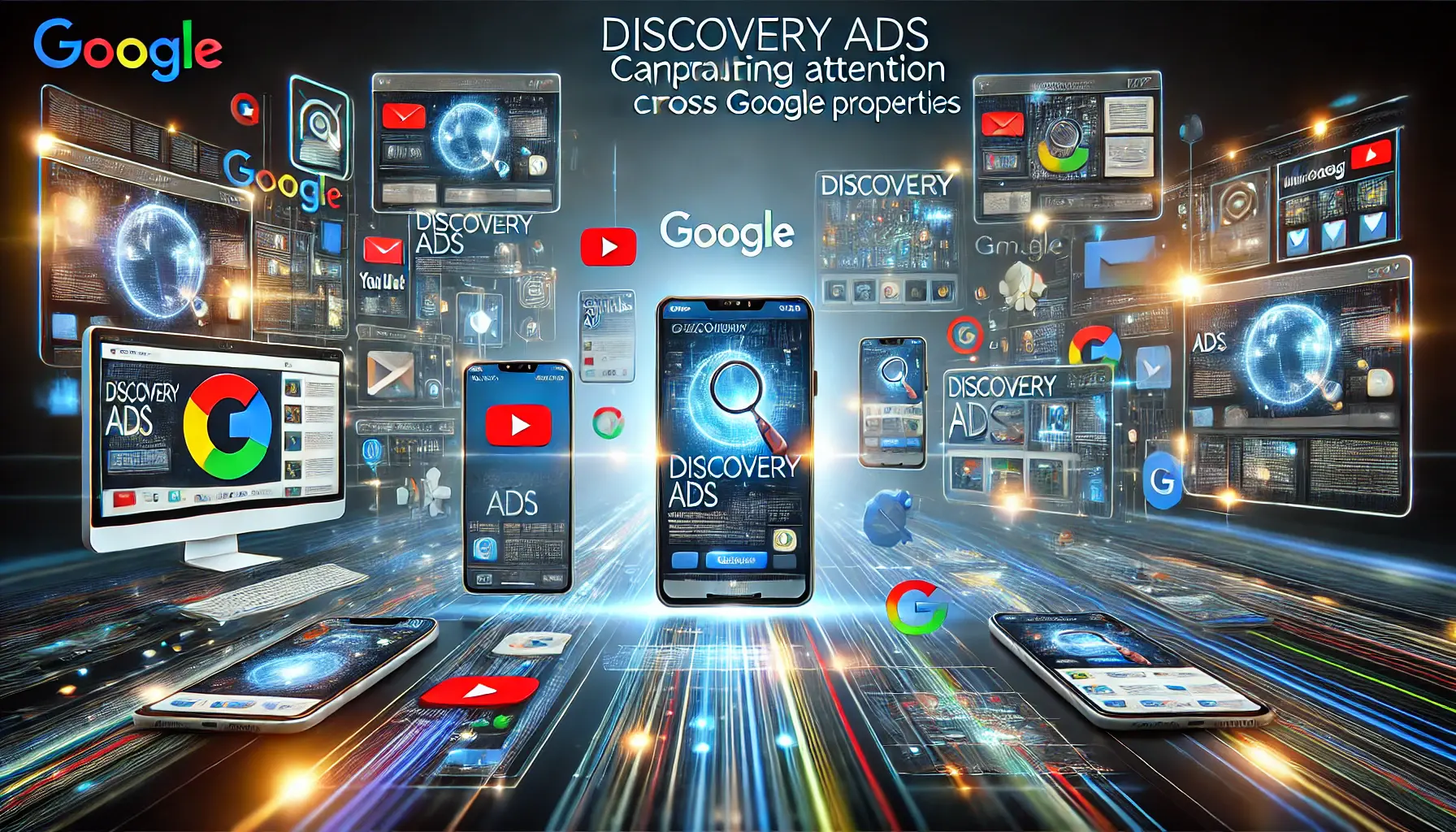
An illustration of Discovery Ads capturing attention across Google’s ecosystem.
Discovery Ads: Capturing Attention Across Google Properties
In the changing dimension of digital marketing, Discovery Ads are considered a very powerful tool for advertisers to engage users in multifaceted ways.
These ads are designed to appear seamlessly within Google’s most popular properties, including YouTube, Gmail, and the Discover feedA Google feature that provides personalized content recommendations to users., allowing brands to reach audiences during their moments of exploration and interest.

An illustration of seamless integration with user feeds across devices.
Seamless Integration with User Feeds
Discovery Ads are crafted to blend naturally into the user’s browsing experience, appearing as native content within various Google feeds.
This integration offers several advantages:
- Enhanced User Engagement: By aligning with the look and feel of the platform, these ads are less intrusive and more likely to capture user interest.
- Broadened Reach: Leveraging Google’s extensive ecosystem, Discovery Ads can connect with a vast and diverse audience.

undefined
Leveraging Machine Learning for Personalized Content
A standout feature of Discovery Ads is their utilization of Google’s advanced machine learning algorithms to deliver personalized content.
This approach enables advertisers to:
- Target Intent-Driven Audiences: By analyzing user behavior and preferences, ads are shown to individuals most likely to engage with the content.
- Optimize Asset Combinations: Google’s system tests various combinations of headlines, images, and descriptions to identify the most effective ad variations.

An illustration of best practices for maximizing impact in digital advertising.
Best Practices for Maximizing Impact
To fully harness the potential of Discovery Ads, consider the following strategies:
- Utilize High-Quality Visuals: Engaging images and videos can significantly enhance ad performance by capturing user attention.
- Craft Compelling Headlines and Descriptions: Clear and persuasive messaging encourages users to interact with the ad.
- Implement Audience Targeting: Leverage Google’s audience segments to reach users whose interests align with your offerings.
By integrating Discovery Ads into your marketing strategy, you can effectively engage users across Google’s platforms, delivering personalized and impactful content that resonates with your target audience.
Discovery Ads blend naturally within Google feeds to engage users during moments of exploration.
- Utilizes high-quality visuals and headlines for better user interaction.
- Employs machine learning to optimize targeting and ad combinations.
- Expands brand reach across Gmail, YouTube, and Discover feeds.

An illustration of embracing ad formats for maximum impact in digital marketing.
Conclusion: Embracing Ad Formats for Maximum Impact
Google Display Ads offer an incredible array of ad formats, each tailored to meet diverse marketing goals and audience preferences.
From the flexibility of Responsive Display Ads to the creative control of Uploaded Display Ads, businesses can leverage these tools to drive visibility, engagement, and conversions.

An illustration of the versatility of Google Ad formats across different devices.
The Versatility of Google Ad Formats
Each ad format brings unique strengths to the table:
- Responsive Display Ads: Adapt seamlessly across devices and placements, optimizing performance with minimal effort.
- Uploaded Display Ads: Provide creative freedom to design custom ads that align with your brand identity.
- Video Ads: Use storytelling and visual appeal to captivate audiences and leave a lasting impression.
- Gmail Ads: Engage users directly in their inboxes with personalized, interactive experiences.
- Discovery Ads: Reach users during moments of exploration across Google’s expansive ecosystem.

An illustration of key takeaways for marketers, highlighting insights and strategies in digital marketing.
Key Takeaways for Marketers
To make the most of these ad formats, marketers should:
- Focus on personalization by leveraging targeting options such as keywords, demographics, and affinity audiences.
- Monitor campaign metrics like click-through rates, conversion rates, and view rates to refine strategies and optimize performance.
- Utilize engaging visuals and compelling messaging to stand out in a competitive digital space.

An illustration of the future of display advertising, showcasing advanced technology and immersive ad formats.
The Future of Display Advertising
As technology and consumer behavior evolve, Google Display Ads will continue to innovate, offering marketers new ways to connect with their audiences.
Staying informed about emerging ad formats and best practices enables enterprise marketers to stay competitive and achieve their marketing goals.
By leveraging the right mix of ad formats, businesses can successfully tap into the power of Google Display Ads to forge valuable relationships, drive brand growth, and enhance visibility in an ever-changing digital landscape.
Google Display Ads empower marketers with a range of formats, enabling better reach and engagement.
- Responsive Display Ads adapt to various devices effortlessly.
- Uploaded Display Ads provide full creative control for custom branding.
- Video Ads combine visuals and storytelling to captivate audiences.
- Gmail Ads offer personalized user engagement directly in inboxes.
- Discovery Ads seamlessly integrate with Google’s ecosystem for broader visibility.
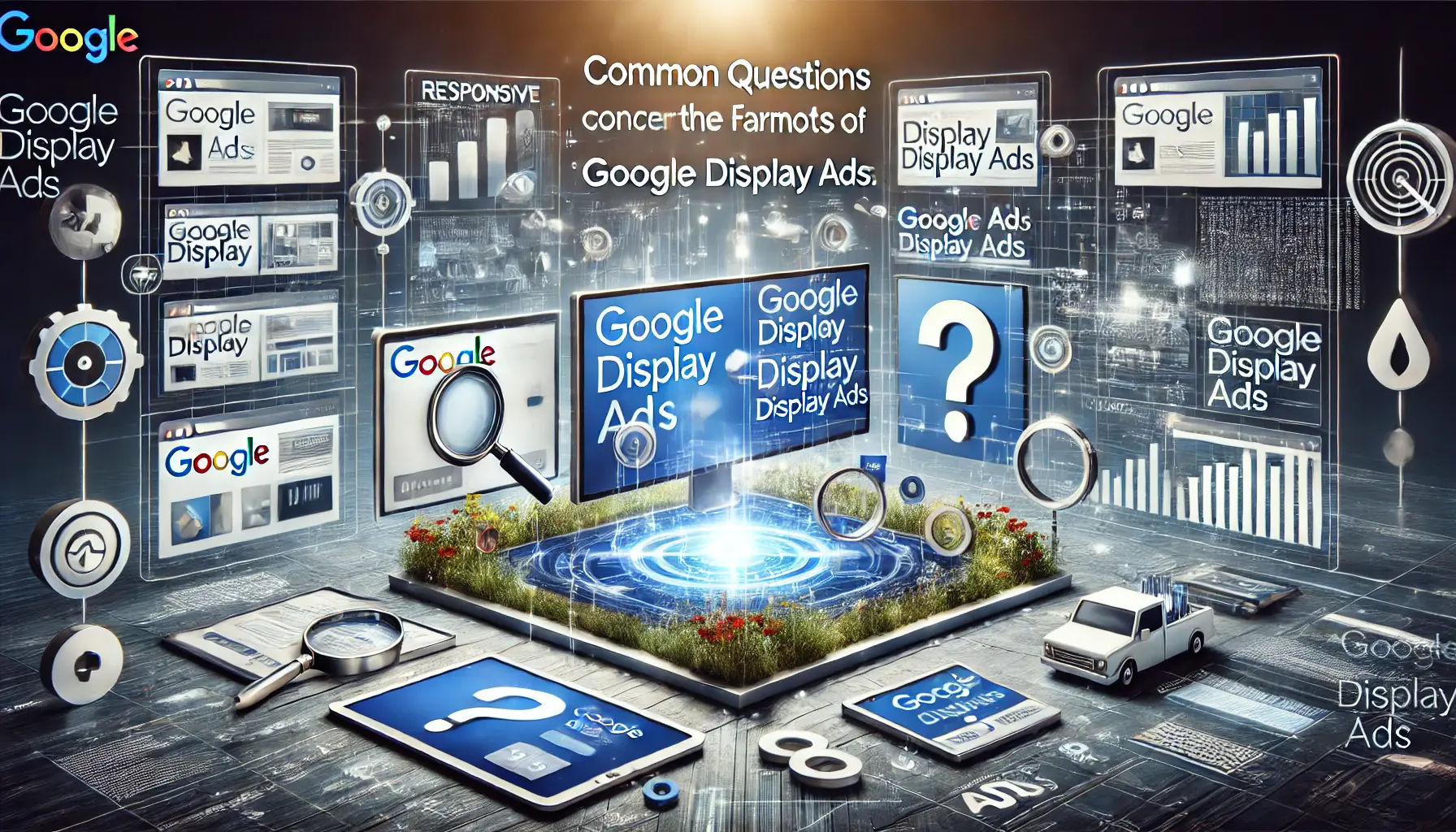
An illustration of common questions about Google Display Ads formats, highlighting their versatility and usage.
Your campaigns can be managed by an agency specialized in Google Ads, check out our service page.
Common Questions Concerning the Formats of Google Display Ads
The different ad formats available on Google Display Ads can significantly improve the way advertisers implement their strategies.
Below are some common questions and quick answers to help clarify these options.
Responsive Display Ads automatically resize to adapt to the available display size and appearance.
They use your uploaded assets to create ads that appear seamless across various devices and platforms.
Uploaded Display Ads are custom-designed creatives that you create and upload, giving you full control over their look and feel.
Conversely, Responsive Display Ads are auto-generated by Google using the assets you provide.
Video Ads combine visuals and audio to engage audiences more deeply, effectively conveying your message and capturing attention across platforms like YouTube and Google’s partner sites.
Gmail Ads appear directly in users’ inboxes, providing personalized and interactive engagement.
They effectively reach users in a frequently visited space, driving higher relevance and connection.
Discovery Ads are visually rich and appear across Google’s platforms, including YouTube, Gmail, and the Discover feed.
They engage users during moments of exploration and interest.
Consider your campaign goals, target audience, and the type of content you want to deliver.
Testing various formats helps determine which performs best for your objectives.
Yes, Uploaded Display Ads must adhere to Google’s specifications for file size, dimensions, and formats to ensure optimal performance and compatibility across the Display Network.
Absolutely.
Combining multiple ad formats can enhance your campaign’s reach and effectiveness by engaging audiences through different channels and content types.
Monitor key metrics such as click-through rates, conversion rates, and impressions within your Google Ads account to assess and optimize ad performance.





